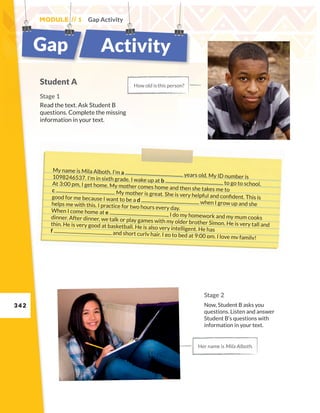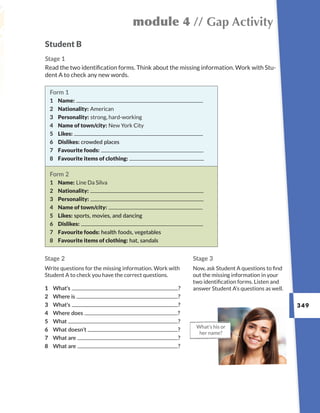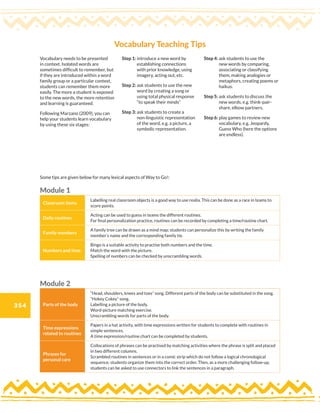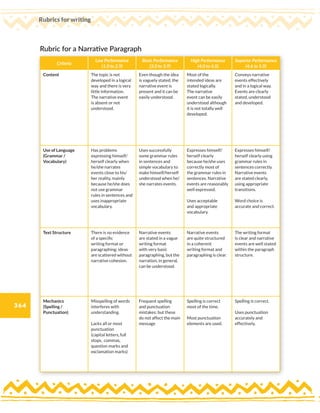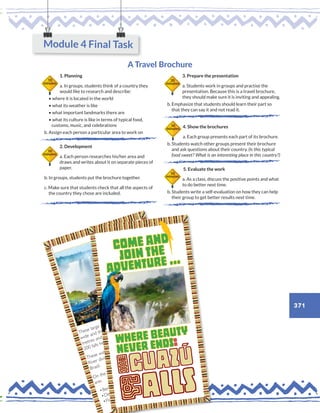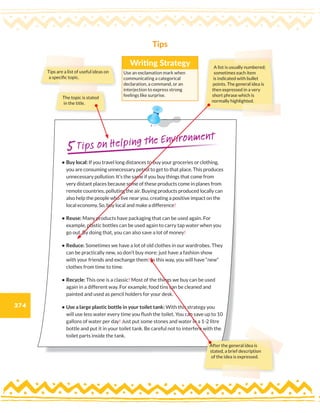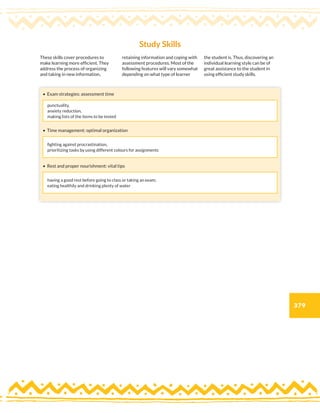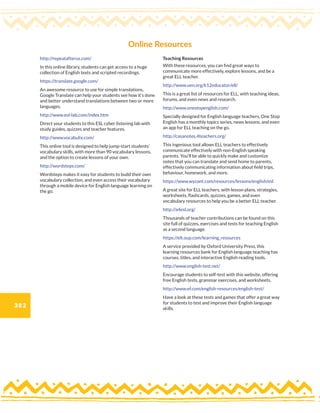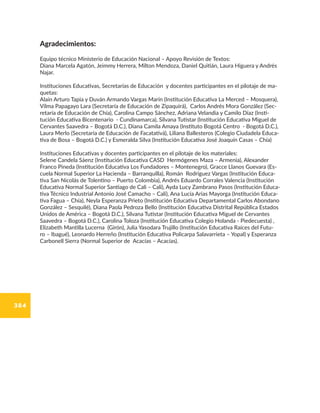This document provides an overview of the Way to Go! English language textbook series for grades 6-11 in Colombia. It describes the objectives of the series which are to help students develop their English communication skills to interact with native and non-native English speakers. Each book has four modules with three units covering topics like democracy, globalization, health and sustainability. The activities are designed to support cognitive and social development through listening, speaking, reading and writing practice. The series aims to guide students to achieve levels from A1 to B1 based on the Common European Framework. It was created to meet the needs of Colombian schools with flexibility, adaptability and alignment to the national English curriculum.
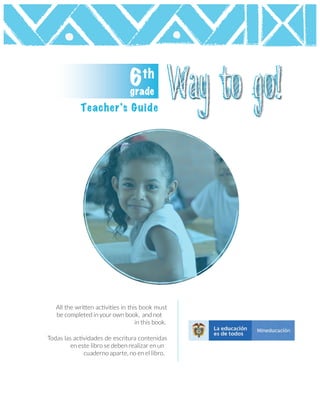







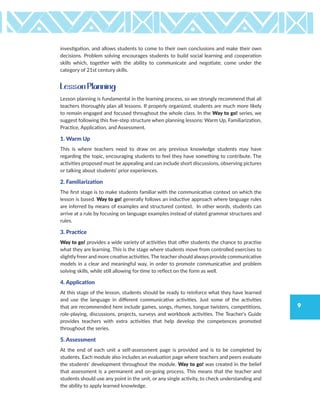















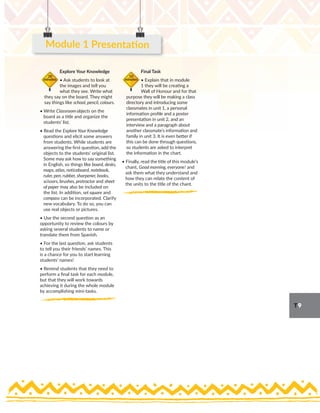






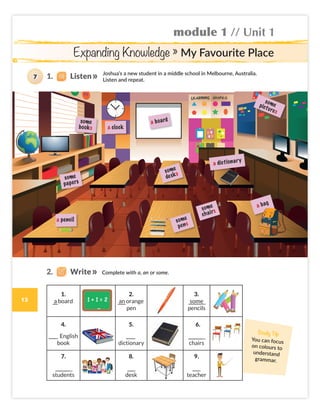
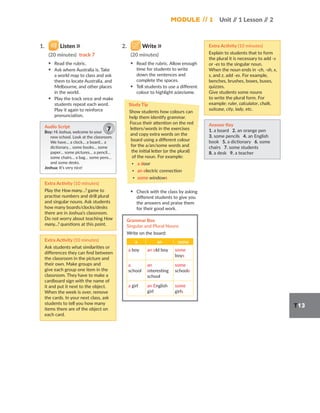














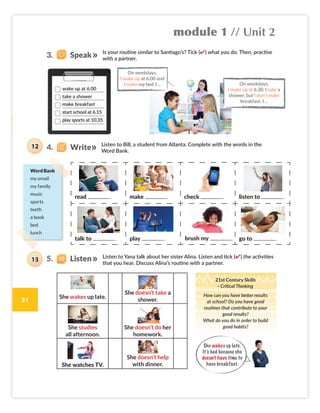


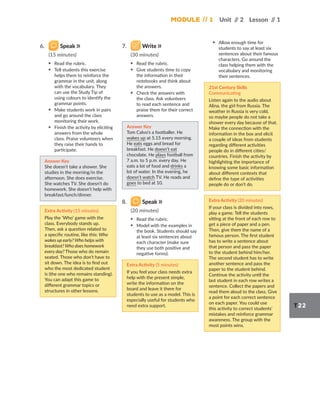
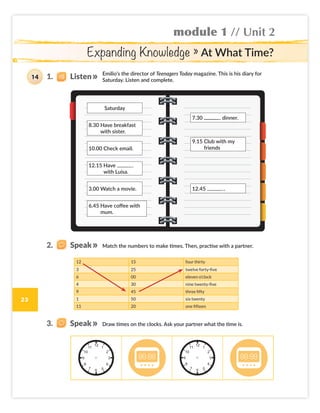



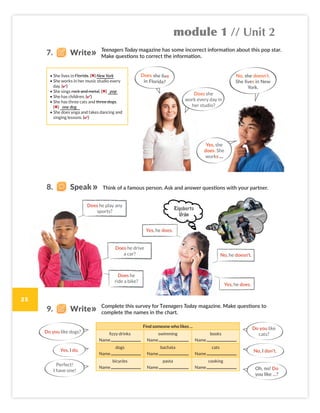





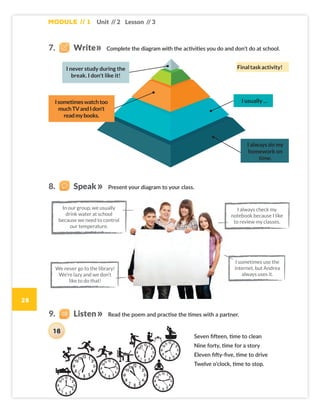


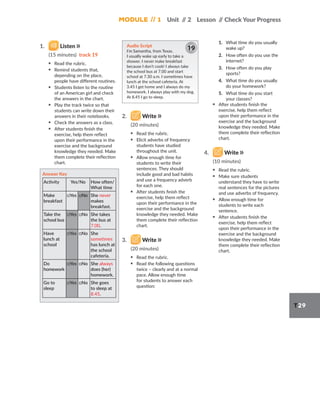


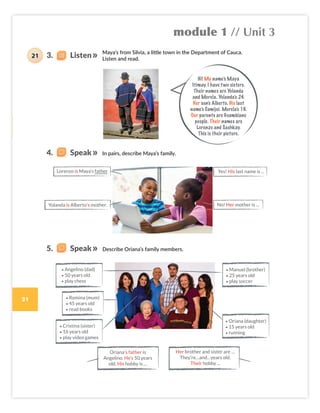
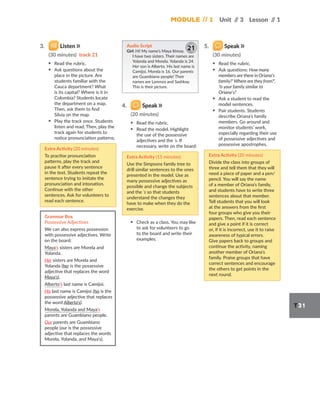


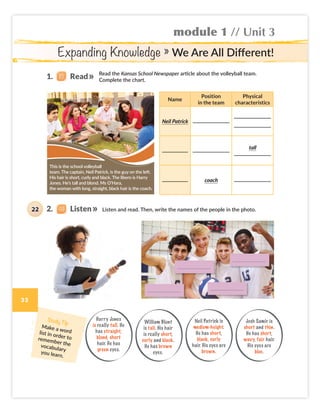


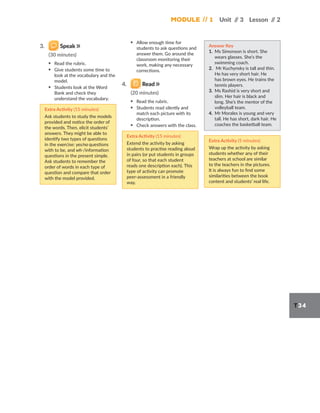


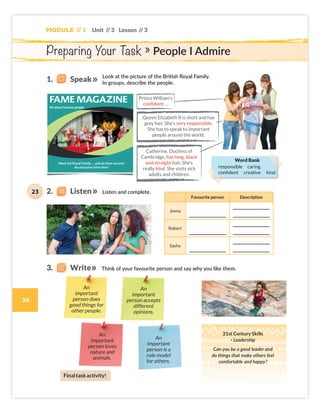







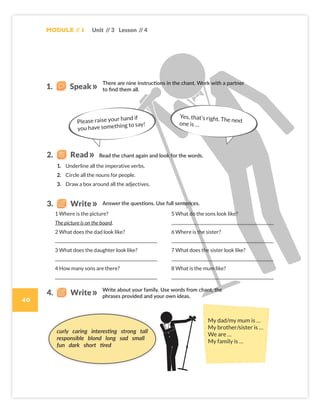


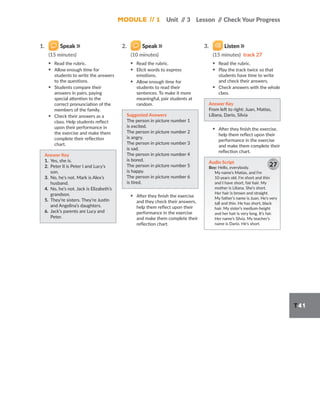
![42
Module // 1 Review
[Up to 4 players] Take turns to roll the die and move the number of
squares. Do or answer what it says in each square. If the answer is
correct, stay on the square. If the answer is incorrect, miss a turn.
The first player to get to the FINISH square wins.
42
1. Complete: I ———always happy.
2. Name 5 physical description words.
3. Give 3 greeting expressions.
4. Describe your mum’s routine.
5. Give 3 expressions teachers use in the classroom.
6. What time do you get up?
7. Name 5 colours.
8. Describe your daily routine.
9. Say the name and age of two classmates.
10. Talk about your family.
11. Give 3 good habits at school.
12. Name 4 frequency expressions.
13. Talk about a person you admire.
START
Question 4
Bonus
roll again
Go back
1 space
Que
Go back
1 space
Question 26
Question 1
Question 2 Question 3
Qu
Question 23
Question 24
Question 25
Bonus
go to the finish
Question 27
Miss a turn
Question 28
Question 29
Question 30
Question 22
Bonus
exchange
places
Question 21
Go back 2
spaces
Review Race
FINISH
SB6 MOD1 RPE pp42-47.indd 42 01/12/2016 12:28
[Up to 4 players] Take turns to roll the die and move the number of
squares. Do or answer what it says in each square. If the answer is
correct, stay on the square. If the answer is incorrect, miss a turn.
The first player to get to the FINISH square wins.
Go back
1 space
Bonus
exchange
places](https://image.slidesharecdn.com/waytogo6docente-231011165640-4391d29c/85/WAY_TO_GO_6_DOCENTE-pdf-90-320.jpg)





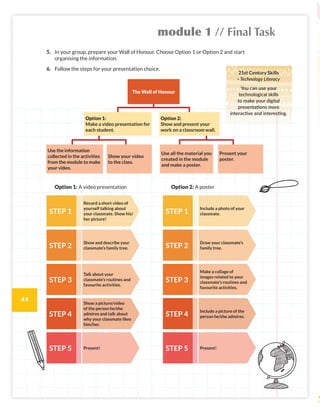





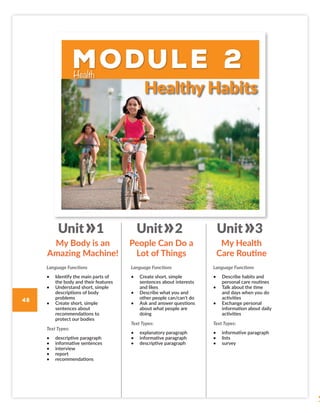



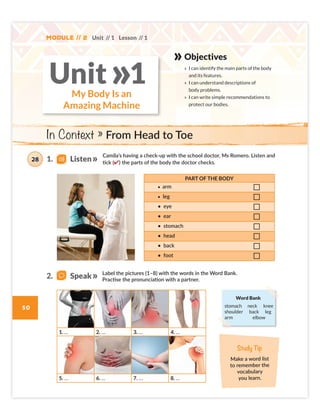

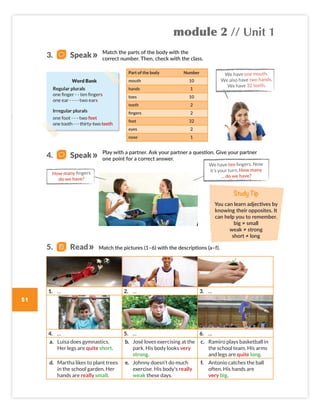




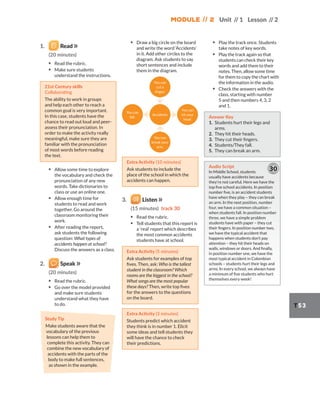





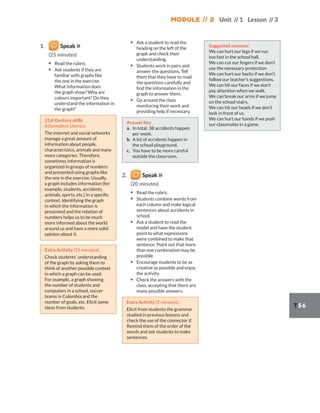










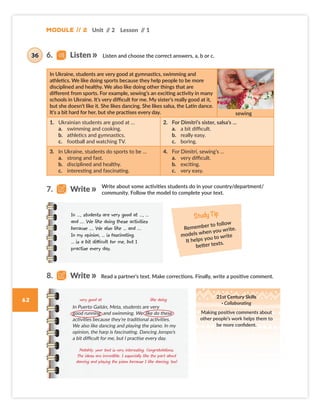
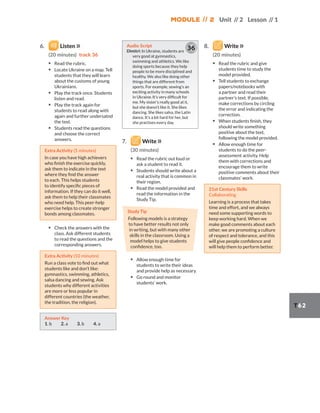



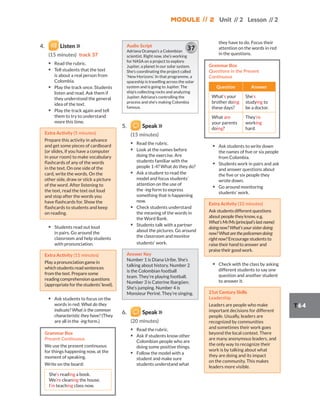
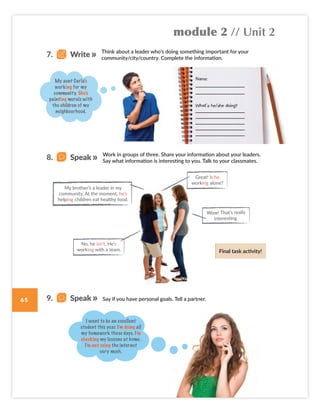




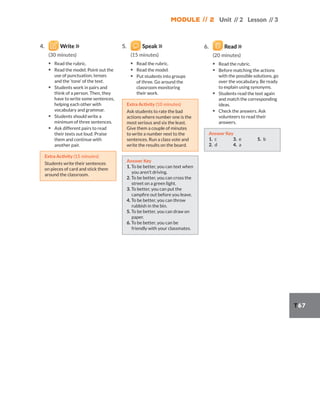





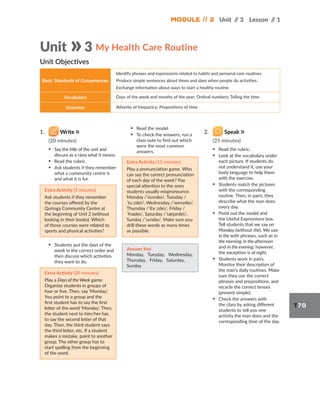








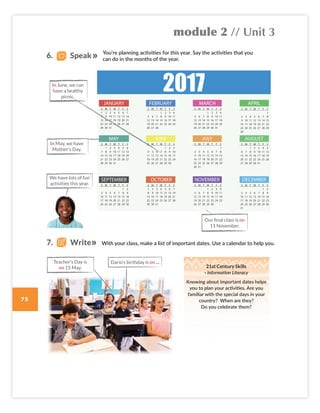



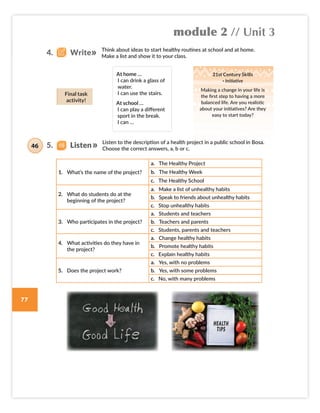


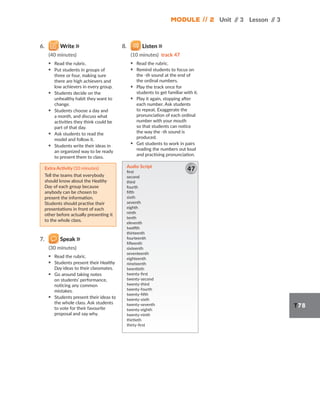
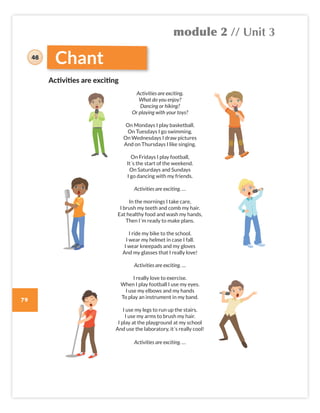
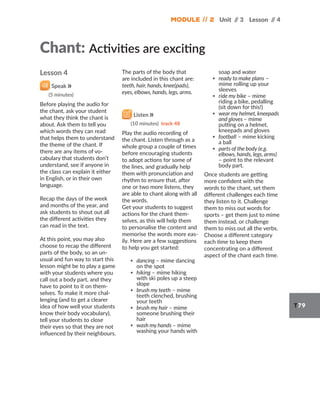












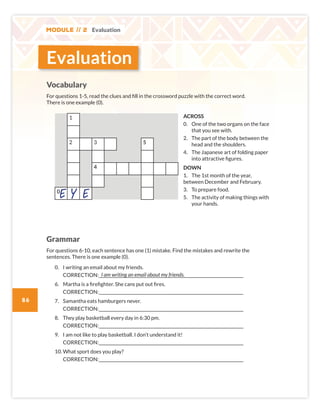



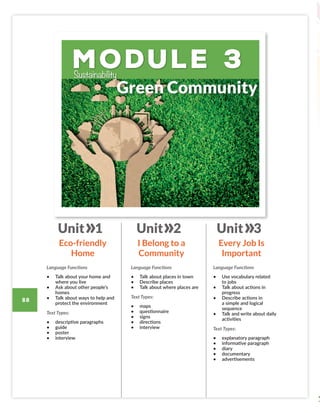











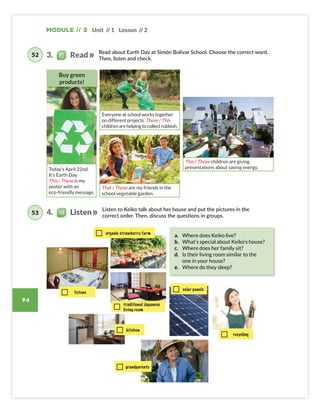




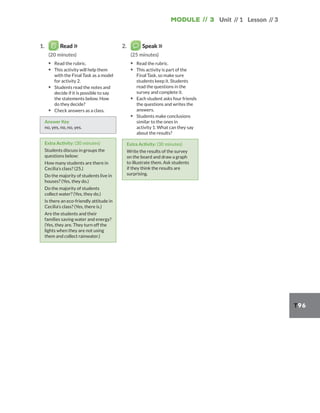






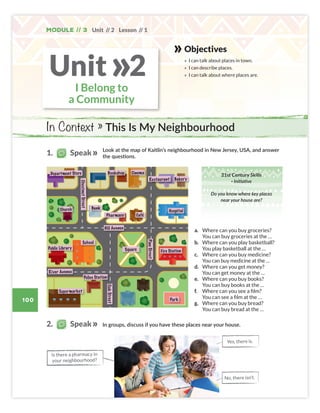





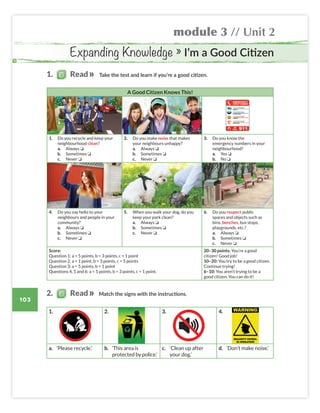


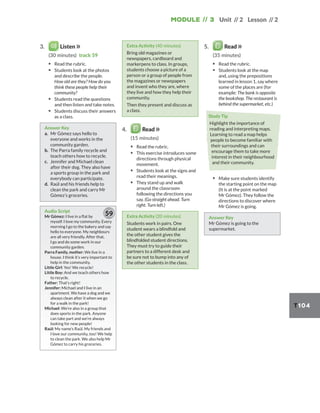


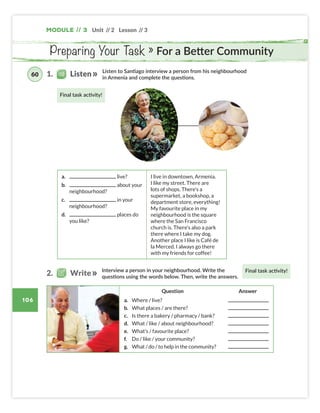






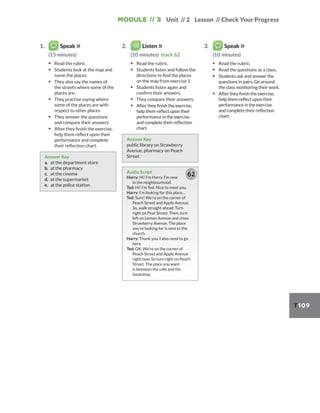




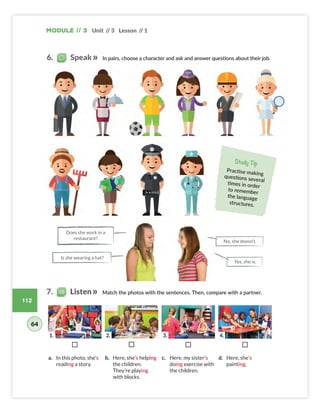







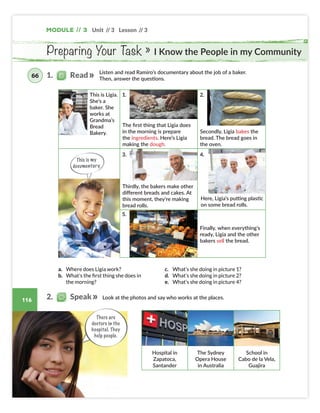


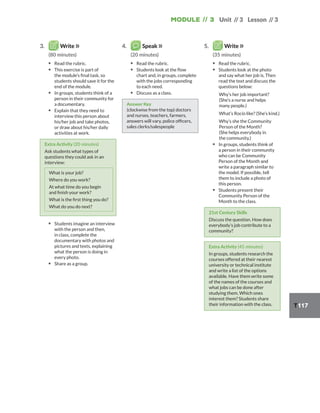
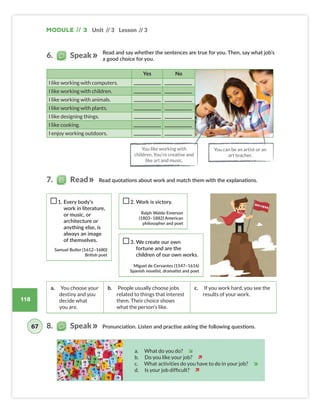

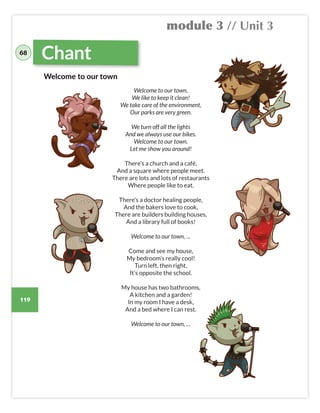

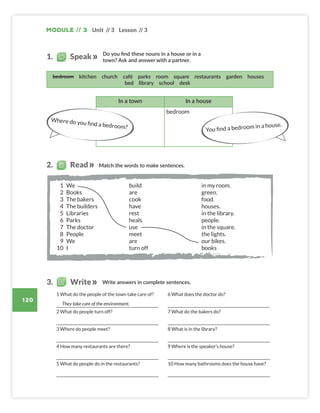





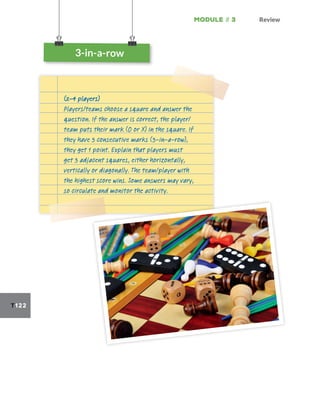
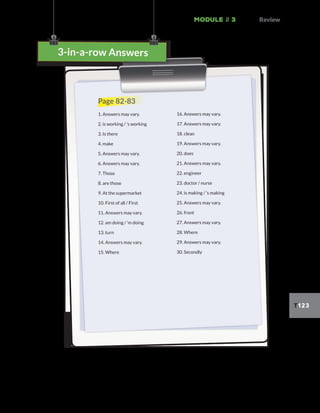





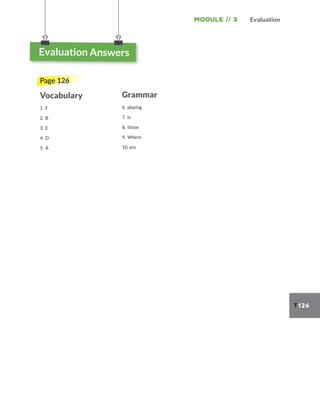



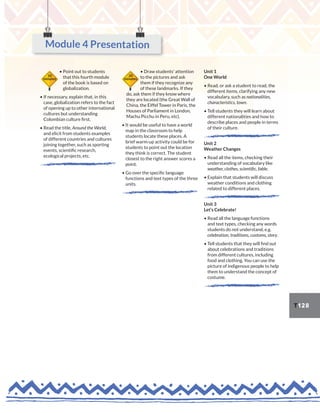




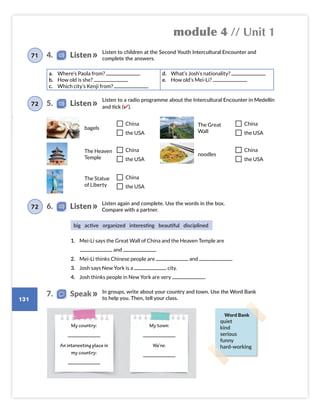
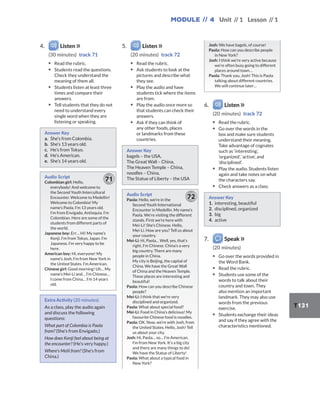














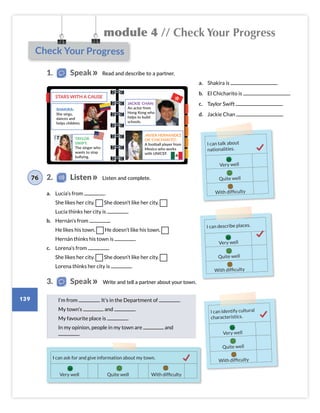






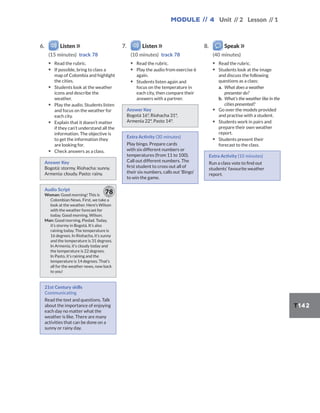







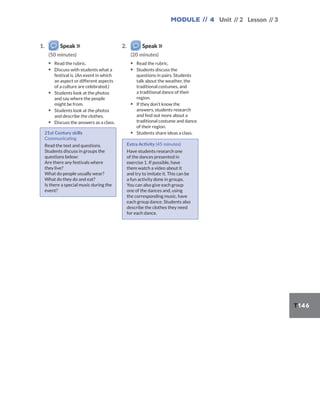
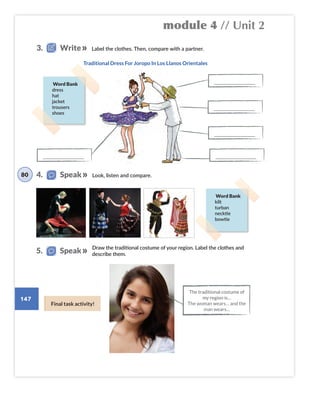


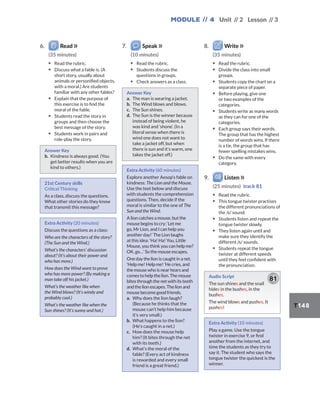
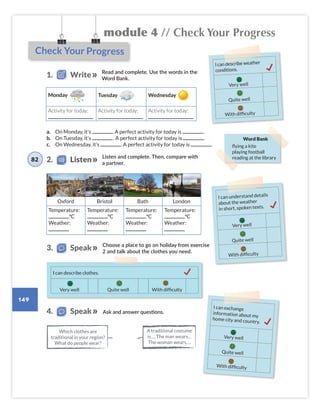




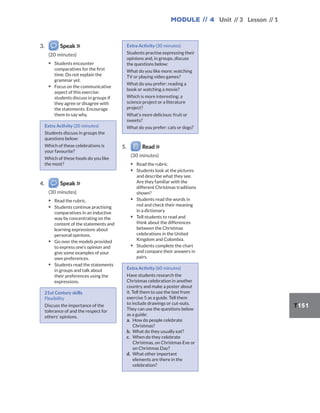








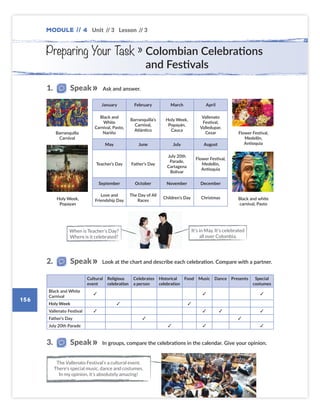








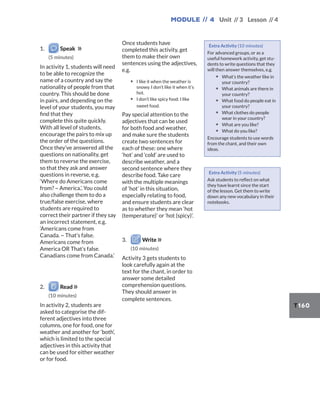
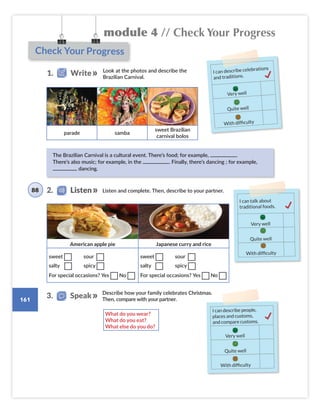




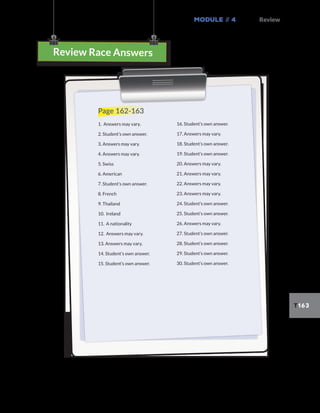

![T164
1.
• Read the rubric.
• Go over the title of the
Final Task. What does
a regional exhibition mean? (An
exhibition about their department and
its characteristics similar to the ‘Youth
Intercultural Encounter’ presented in
the first lesson of Unit 1. Students will
prepare stands for their region and
show and present what it is like).
• Students go over the checklist and
make sure they have all the material
they created throughout the module
for the Final Task.
2.
• Read the rubric.
• Students look at the
photos. What do they think is
important to have in mind when giving
an oral presentation? Write their ideas
on the board.
• Students compare their answers in
groups. Remind students that these
steps are the logical order for an oral
presentation.
• Discuss the following questions:
a. Why’s it important to know your
material? (Because it gives you
confidence for the presentation).
b. Why’s it also important to
practise? (Because you know what
to say and how to say it).
• Tell students that speaking loudly
and making eye contact are strategies
used to address the audience
effectively.
• Discuss as a class which of these
aspects are really important for them.
Answer Key
In order to make a good oral
presentation, it is important to have
some aspects in mind.
First, you have to know your
material well. It is also important
to practise your presentation
beforehand. Remember to speak
loudly and clearly so that your
audience can hear you well.
Don’t forget to make [wol] contact.
And enjoy yourself! You have
worked hard so it’s time to show
what you know!
3.
• Read the rubric.
• Students choose one of
the two options for the Final
Task: one is making a PowerPoint
presentation of their region and the
other is making an actual stand at an
exhibition in their classroom. The first
option involves technological and
presentation skills, and the second
choice is about preparing a visually
appealing stand and presenting their
work.
• Go over the 21st Century Skills box.
21st Century skills
Teamwork
Discuss why teamwork is
important and whether they find
the characteristics mentioned
necessary to work as a team.
15
minutes
15
minutes
15
minutes
Module 4 Final Task
A Regional Exhibition](https://image.slidesharecdn.com/waytogo6docente-231011165640-4391d29c/85/WAY_TO_GO_6_DOCENTE-pdf-335-320.jpg)






